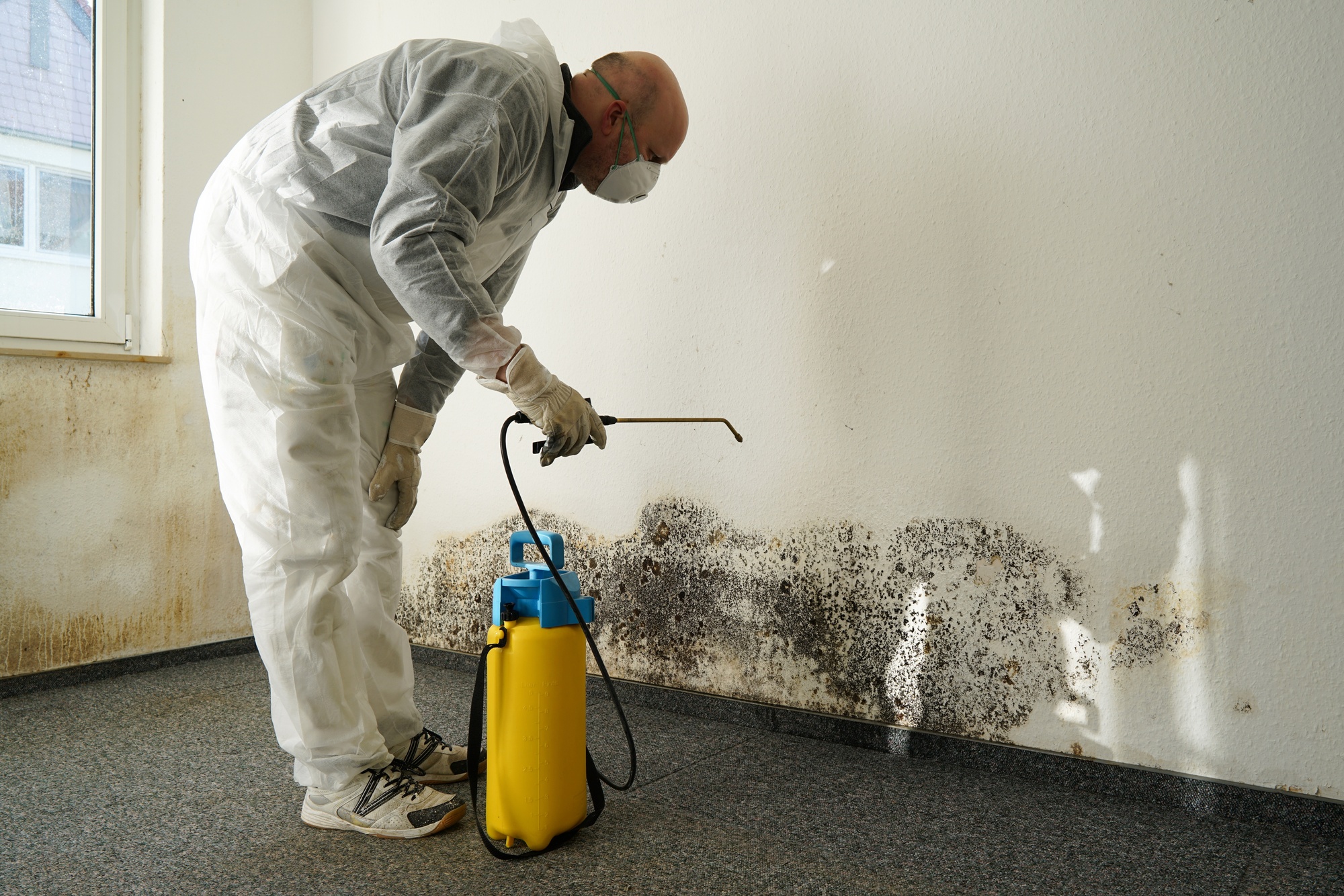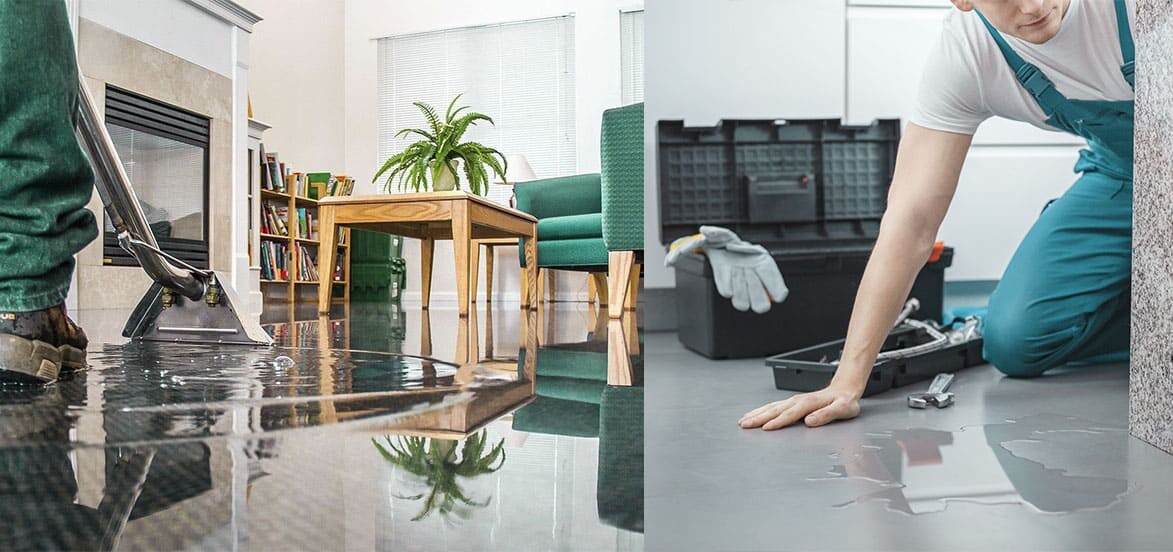Top Tips for Effective Water Damage Restoration: Shield Your Property Today
Water damage can strike all of a sudden, triggering substantial disruption and possible hazards. Efficient restoration needs a systematic method to decrease additional injury. From assessing the damage to applying safety nets, each action plays an important function in safeguarding building. Understanding these methods can make all the distinction in the aftermath of a water-related situation. What essential actions should be focused on to assure complete protection?

Examine the Damage Right Away
When a water damage occasion takes place, it is important to analyze the damage immediately to minimize more problems (Water Extraction And Drying). This first evaluation helps determine the extent of the damage and determines impacted locations. Water can leak into walls, floors, and furnishings, causing mold and mildew growth and structural instability if not dealt with promptly. A complete examination needs to consist of looking for discoloration, dampness, and moldy odors, which indicate dampness visibility. It is additionally vital to document the damage through pictures and notes for insurance policy functions. Engaging professionals for a more comprehensive assessment might be essential, specifically when managing considerable or surprise damage. Early acknowledgment and exact evaluation lay the structure for efficient restoration and guard the property from added problems
Turn off the Water System
Shutting down the water is a crucial action in preventing more damage during a water-related incident. When a leak or flooding takes place, instant activity is crucial to minimize the degree of the damage. Locating the primary water shut-off shutoff should be a top priority. This valve is typically situated near the water meter or where the water line enters the home. Once situated, transforming the valve clockwise will certainly stop the circulation of water. In situations where the major valve is unattainable, individual shut-off valves for home appliances may likewise be made use of. Quickly shutting off the water not just shields the home from additional damage yet also facilitates the subsequent repair procedure, making sure that recuperation efforts can start immediately.
Eliminate Excess Water Without Delay
Removing excess water quickly is crucial for minimizing damage and preventing mold growth in influenced areas. The longer water stays touching materials such as insulation, drywall, and wood, the better the danger of architectural damage and the development of mold. House owners need to act quickly to analyze the situation and utilize suitable tools, such as wet vacuums or pumps, to remove standing water successfully. If the quantity of water is significant, getting in touch with professional restoration solutions might be essential, as they can supply customized devices and proficiency. In addition, removing furnishings and belongings from the affected location can assist to minimize damage and help with the overall reconstruction procedure. Timely action not just secures property yet additionally aids in a smoother recovery trip.

Dry Out the Affected Location
After removing excess water, it is important to dry out the damaged area thoroughly. This entails eliminating any kind of standing water and enhancing air flow to facilitate evaporation. Water Damage Restoration. Efficient drying will assist avoid mold and mildew growth and further damage
Eliminate Standing Water
Swiftly resolving standing water is important for reliable water damage restoration. The presence of stationary water can result in further residential property damage and develop an atmosphere for mold development. To reduce these threats, it is vital to eliminate standing water as promptly as possible. Water Damage Restoration. This process typically entails making use of submersible pumps, damp vacuums, or specialized removal equipment. Professionals advise examining the deepness and extent of the water prior to picking the appropriate approach for removal. Safety and security safety measures need to likewise be taken, consisting of putting on protective gear and making certain electrical energy is switched off in impacted areas. As soon as the standing water is effectively eliminated, the drying out procedure can begin, even more guarding the residential property from ongoing damage

Increase Air Circulation
Enhancing air blood circulation is crucial for properly drying out areas influenced by water damage (Mold Remediation After Water Damage). This process helps to speed up evaporation, decreasing the threat of mold and mildew development. Professionals frequently recommend using fans to produce a stable air flow throughout the area. Placing box fans in windows can draw in fresh air, while high-velocity followers can guide air flow in the direction of moist surface areas. Furthermore, opening windows and doors enables cross-ventilation, enhancing the drying process. Dehumidifiers can additionally be used to get rid of excess dampness from the air, more assisting in drying out. By guaranteeing that air distributes freely, building proprietors can greatly reduce the long-lasting impacts of water damage and secure the stability of their framework
Check for Mold Development
Mold development is a severe problem adhering to water damage, as it can cause health and wellness problems and structural wear and tear. After any type of flooding or leaks, it is important to conduct a comprehensive inspection of the influenced locations. This consists of checking hidden rooms such as behind walls, under carpets, and in attic rooms or basements where dampness may linger. Indications of mold consist of a moldy smell, discoloration on surfaces, or visible growth. Residential or commercial property owners must use protective gear when evaluating, as mold spores can posture health dangers. If mold and mildew is discovered, it is important to resolve it right away, as postponing removal can intensify the trouble and increase the danger of serious health and wellness problems for residents. Early treatment is vital to effective mold administration.
Repair Work and Recover Broken Frameworks
When addressing water damage, it is necessary to first assess the structural stability of the impacted locations. This analysis aids determine possible threats and educates the necessary repair work techniques. Engaging expert repair solutions assures that the reconstruction procedure is performed securely and properly.
Analyze Structural Integrity First
Before launching any kind of water damage reconstruction, it is crucial to analyze the architectural stability of the damaged location. This analysis aids determine any type of compromised elements, such as foundations, wall surfaces, or beam of lights, which may present security risks. Inspecting for signs of bending, fracturing, or mold development is critical, as these indications can expose underlying damage that requires immediate focus. Furthermore, understanding the extent of the damage can guide repair efforts and identify whether repair services are possible or if substitute is needed. It is necessary to record findings extensively, as this info can be beneficial for insurance coverage claims or future referral. Prioritizing architectural assessment warranties that remediation initiatives continue safely and efficiently, eventually shielding the home and its occupants.
Use Professional Restoration Services
Using specialist restoration services is essential for effectively repairing and restoring broken frameworks after water incidents. These professionals have the necessary training, devices, and experience to reduce and analyze water damage thoroughly. They can determine surprise issues, such as mold development and architectural weak points, that may not be immediately obvious. Expert solutions also utilize innovative drying out techniques and devices, making certain that all dampness is eliminated to avoid additional damage. Furthermore, they follow industry standards and policies, making sure that the reconstruction procedure is effective and risk-free. By engaging remediation experts, homeowner can speed up recovery, lessen lasting damage, and eventually secure their investment. This positive method is important in maintaining the integrity and safety of affected structures.
Protect Against Future Water Damage
To properly protect against future water damage, house owners need to take on an aggressive technique to maintenance and repairs (Flood Cleanup Services). Normal assessment of downspouts, roofings, and gutters is necessary; blocked rain gutters can bring about water overflow and roofing leaks. Additionally, inspecting for leaks in pipes fixtures and home appliances can combat possible damage. Property owners must also consider mounting sump pumps in basements or low-lying areas to take care of water buildup. Sealing splits in foundations and making sure appropriate drainage around the building are essential steps in guarding versus water invasion. Keeping humidity degrees with dehumidifiers can protect against mold development. By applying these preventative procedures, homeowners can greatly lower the threat of water damage and safeguard their residential property for the long-term
When a water damage event occurs, it is vital to analyze my site the damage right away to mitigate further problems. Removing excess water quickly is important for minimizing damage and preventing mold and mildew growth in influenced locations. Promptly addressing standing water is vital for effective water damage remediation. The presence of stagnant water can lead to further home damage and develop a setting helpful to mold and mildew growth. Prior to initiating any kind of water damage reconstruction, it is important to examine the structural integrity of the affected location.